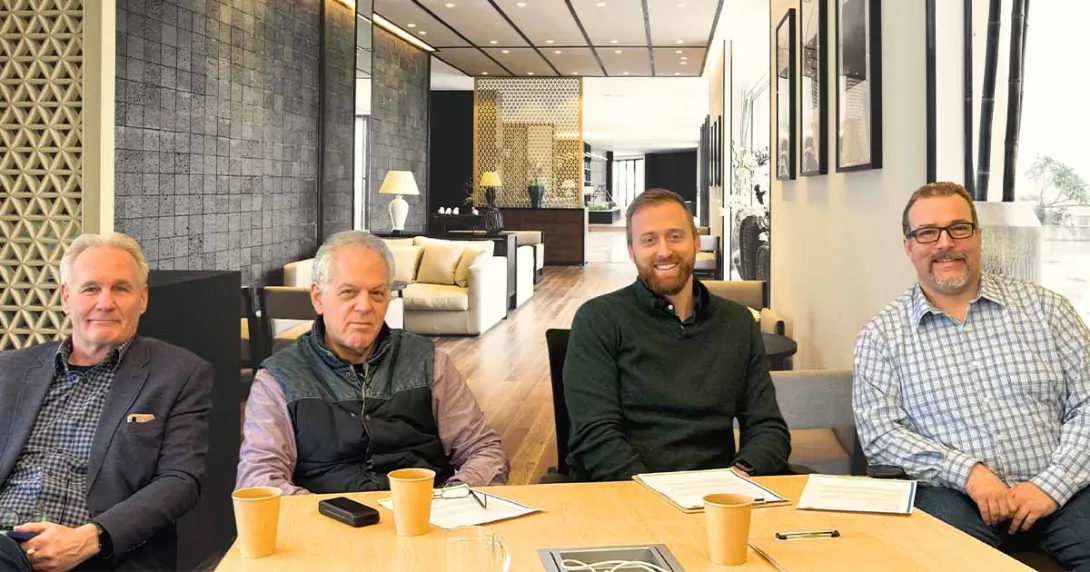
A study recently published in the Journal of Alzheimer's Disease highlights how efficiently digital assessments can uncover the earliest signs of cognitive impairment – likely years before traditional testing methods or noticeable symptoms emerge.
The narrative review and synthesis study is titled, "Precision neurocognition: An emerging diagnostic paradigm leveraging digital cognitive assessment technology."
The study's lead authors are David J. Libon, professor at the New Jersey Institute for Successful Aging at Rowan University, and Rod Swenson, clinical professor of psychiatry and behavioral science at the University of North Dakota School of Medicine and Health Sciences. Libon holds a Ph.D. in neuropsychology, and Swenson holds a Ph.D. in psychology. Both are advisors to Linus Health, a brain health company producing science-driven digital systems including the digital cognitive assessments discussed in the study.
Capturing quantifiable risk data
The findings demonstrate how a seven-minute speech-based digital cognitive assessment from Linus Health captures quantifiable data on neurodegenerative disease risk based on patients' process of answering questions and test prompts.
In the peer-reviewed article, Libon and Swenson introduce a series of novel digital biomarkers based on latency – the pauses and reaction times between actions – when responding to questions or test prompts. They describe how subtle changes in the time required to respond – even when answers are 100% correct – can be interpreted as biomarkers for identifying the risk of mild cognitive impairment, Alzheimer's disease and other forms of dementia.
"Precision cognition revolves around the ability to use artificial intelligence and digital assessment technology to measure highly nuanced and discrete time units or latencies associated with otherwise adequate or 100% correct responding on neuropsychological tests," Libon told Healthcare IT News.
"A response-time biomarker is the parsimony and total time necessary to generate an adequate or 100% correct response on a test," he continued. "For example, if I ask you, 'Who was the 26th president of the United States,' you could say, 'Theodore Roosevelt,' or you could say, 'Ah … I know this … ah … it's that rough-rider guy … ah … TR … it is Theodore Roosevelt.'"
Two different responses, both correct
Both responses are 100% correct. However, the first response was provided quickly and parsimoniously. For the second response, total time to completion is lengthy and not parsimonious, as there is much nonproductive speech.
"The second response could be a signal we are dealing with a brain at risk," he explained. "It is not possible to measure such behavior with a simple stopwatch or with common, traditional, paper-and-pencil tests," he noted.
"The seven-minute speech-based digital cognitive assessment from Linus Health measures verbal memory with a six-word memory test; executive abilities by asking participants to repeat three trials of five numbers backwards; and language-related abilities by providing 60 seconds to generate the names of 'animals,'" he continued.
Digital assessments can reveal very early emergent problems by looking for a mismatch between a response that is adequate or 100% correct, versus the amount of time and other factors necessary to generate a 100% correct response, he added.
AI captures very nuanced behavior
"It is not possible to gather such data using a simple stopwatch or traditional paper-and-pencil tests," he said. "However, the AI and digital assessment technology easily captures this very nuanced behavior.
"For example, as part of the seven-minute assessment, the latency or reaction time on the recognition portion of the verbal memory test is easily captured," he explained. "Despite the fact a response is 100% correct, some patient groups require approximately an additional two seconds to generate a correct response. This is another example of a response-time biomarker. When brought to scale, this type of behavior could, again, signal we are dealing with a brain at risk."
In the recently published precision cognition paper and in other recently published papers using the Linus seven-minute assessment, Libon and his colleagues demonstrate that patients can be classified into groups suggesting normal cognition, dementia or several mild cognitive impairment subtypes.
"When brought to scale, say, when this assessment is a routine part of a physical examination, we will be able to flag emergent dementia-related illness much earlier," he stated. "Early identification means treatment can be initiated sooner, potentially resulting in a better outcome.
"The Linus seven-minute assessment is just one of a portfolio of AI-assisted, digital assessment tests available and in use," he continued. "Important factors to keep in mind are that this technology is available, easy to integrate into medical office workflow, and compared to other technologies, such as MRI scans, very inexpensive."
For all these reasons, the power and benefit of the seven-minute digital test constitutes an important weapon against Alzheimer's disease, he concluded.
Follow Bill's health IT coverage on LinkedIn: Bill Siwicki
Email him: bsiwicki@himss.org
Healthcare IT News is a HIMSS Media publication.
WATCH NOW: Helpful tips on smart rooms from OhioHealth


